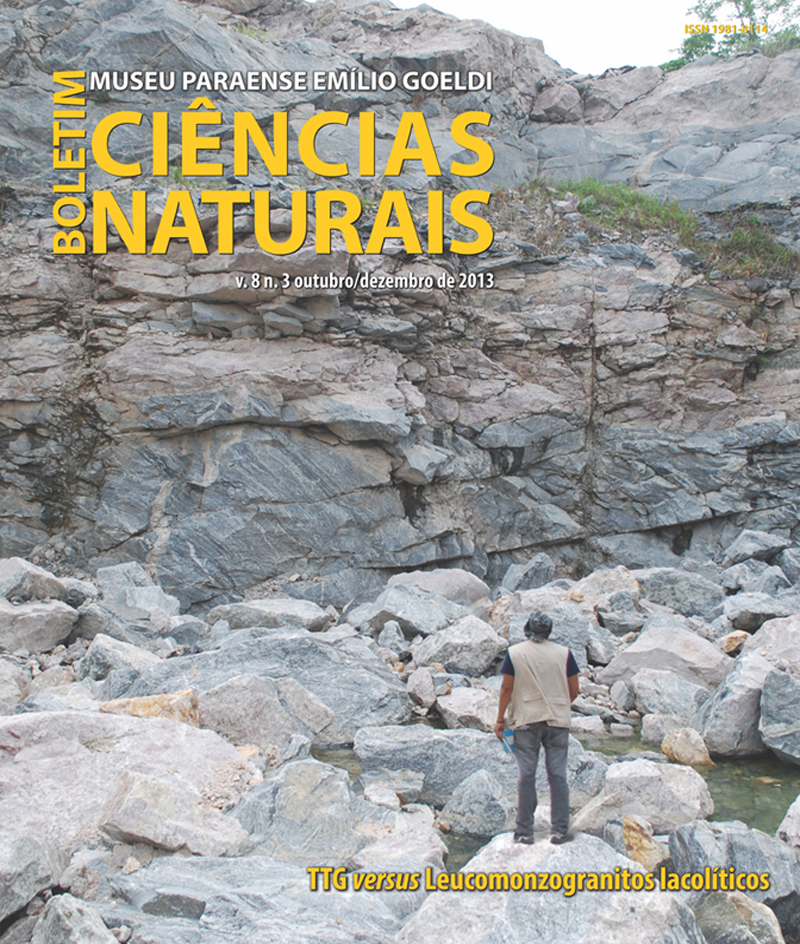Geologia, geoquímica e geocronologia do Diopsídio-Norito Pium, Província Carajás
DOI:
https://doi.org/10.46357/bcnaturais.v8i3.554Palavras-chave:
Pb-Pb, Sm-Nd, Elementos maiores e traços, Norito Pium, Cráton AmazônicoResumo
O Diopsídio-Norito Pium ocorre a sul da Bacia Carajás e é constituído por noritos (± gabronoritos), quartzo-gabros com variações para enderbitos e, de maneira restrita, rochas cumuláticas. Relações de contemporaneidade (magma mingling) são observadas, uma vez que a variedade de composição norítica ocorre ora como enclaves angulosos e de contatos retilíneos no interior das rochas quartzo-gabroicas, evidenciando alto contraste de viscosidade, ora como um enxame de enclaves arredondados (blebs/autólitos) no interior da variedade hornblenda-gabro. Os dados geoquímicos demonstram que estas rochas possuem enriquecimento em FeOt em relação ao MgO, apontando a natureza subalcalina toleítica das mesmas, e uma origem a partir da fusão parcial do manto peridotítico. Diagramas de ambiência tectônica evidenciam que estas rochas possuem afinidades geoquímicas com basaltos intraplacas e apontam para um processo de evolução magmática a partir dos noritos até os enderbitos. Idades Pb-Pb obtidas para estas rochas, entre 2745 ± 1 Ma e 2744 ± 1 Ma, são consideradas suas idades de cristalização. As análises Sm-Nd forneceram idades-modelo TDM entre 3,14 e 3,06 Ga, e valores de εNd (T = 2,74 Ga) entre -2,78 e -1,58, indicando um significativo envolvimento de fontes crustais em sua gênese. As idades-modelo confirmam um importante período de formação de crosta no Mesoarqueano na Província Carajás.
Downloads
Publicado
Edição
Seção
Licença
A publicação implica cessão integral dos direitos autorais do trabalho à revista. A declaração para a cessão de direitos autorais é enviada
juntamente com a notificação de aceite do artigo. Deve ser devolvida assinada via e-mail. Todos os autores devem assinar uma declaração.






